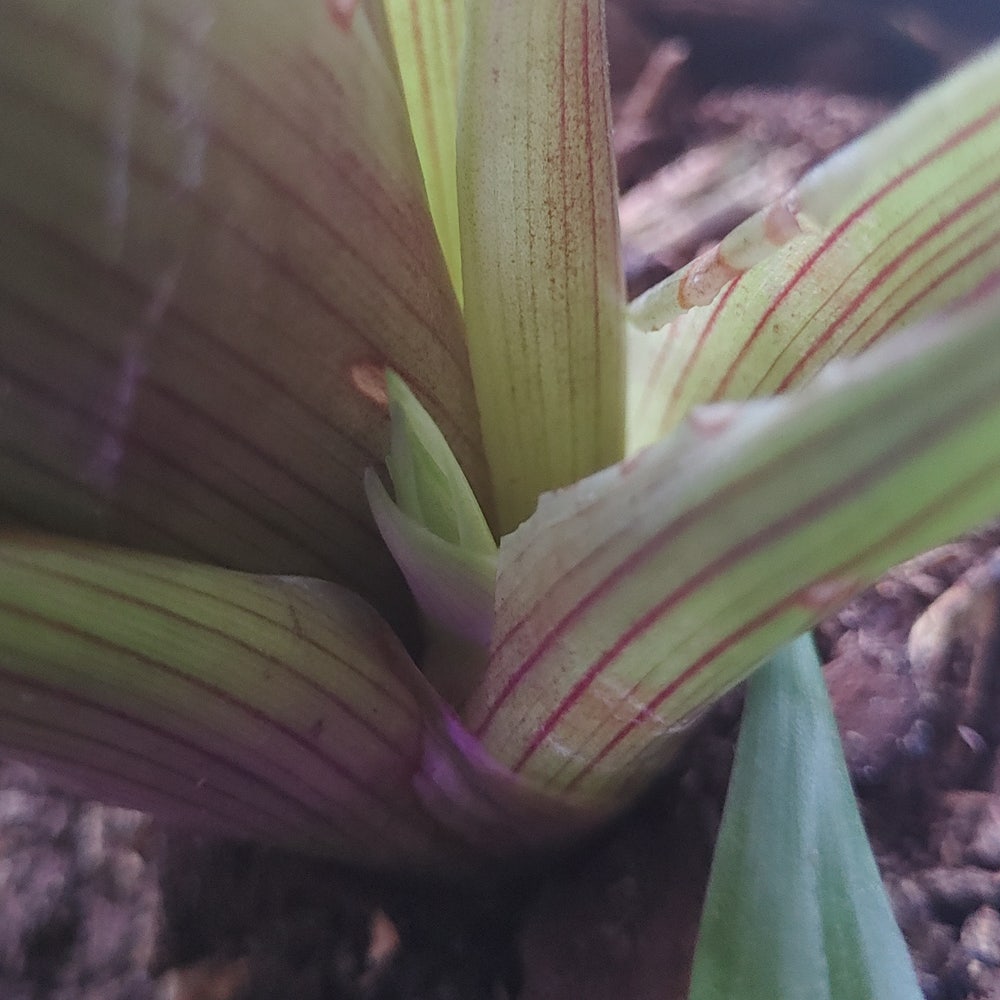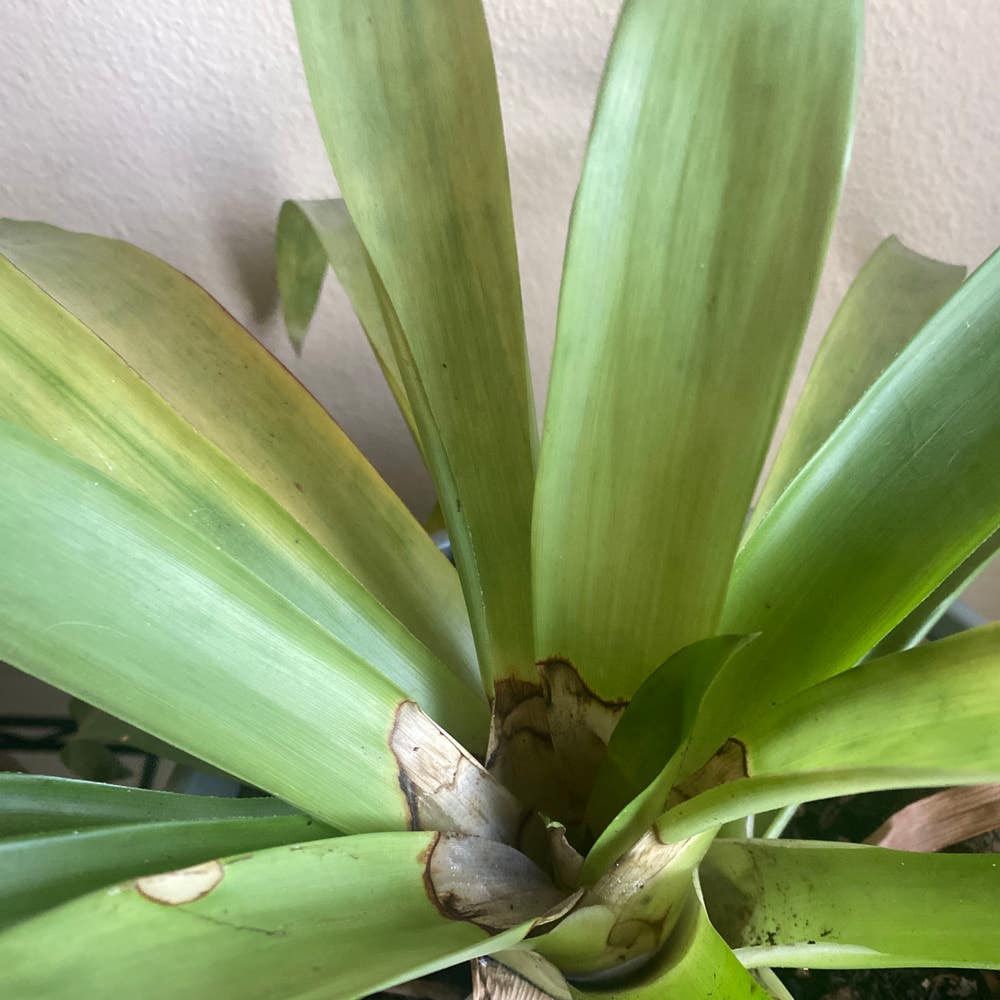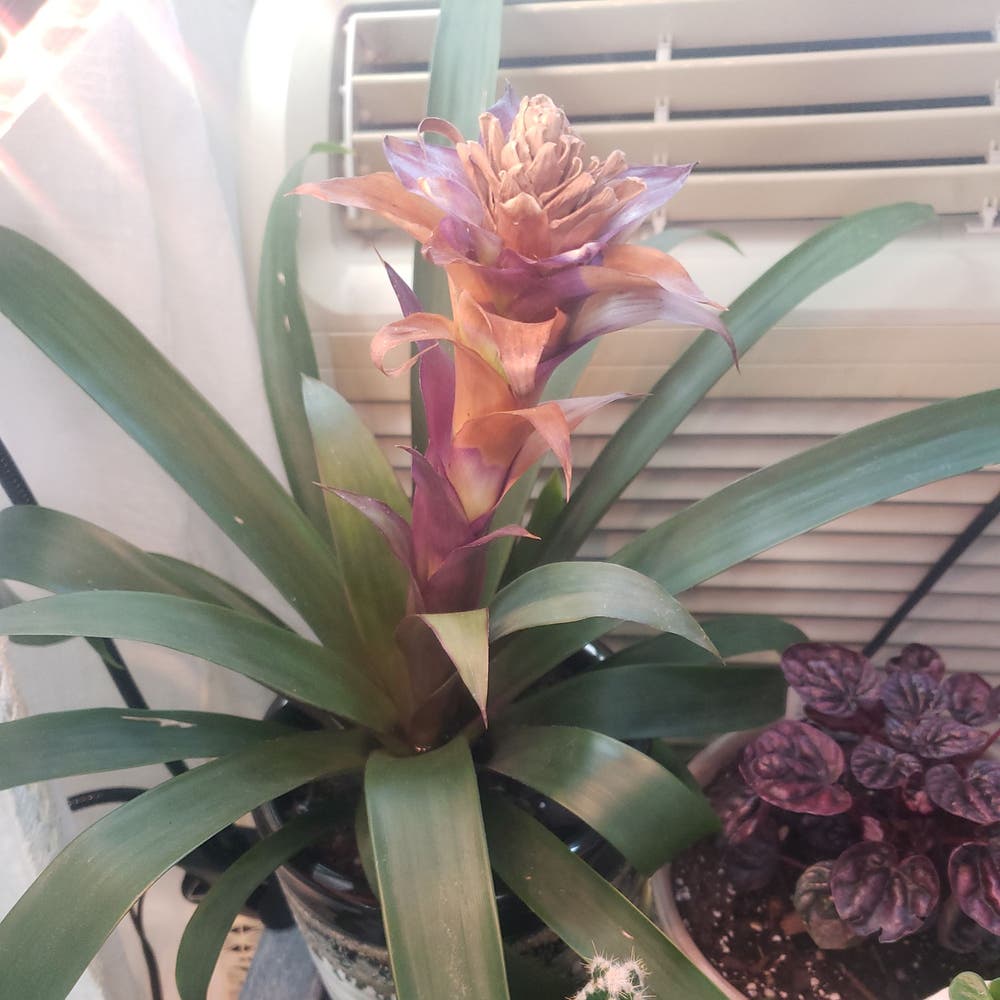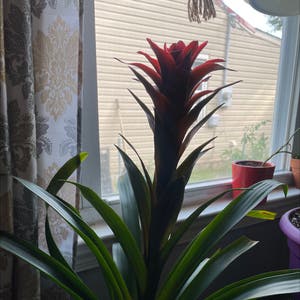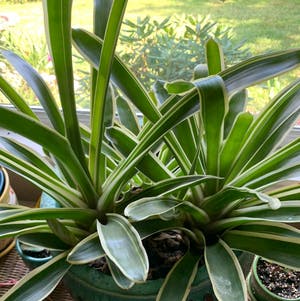

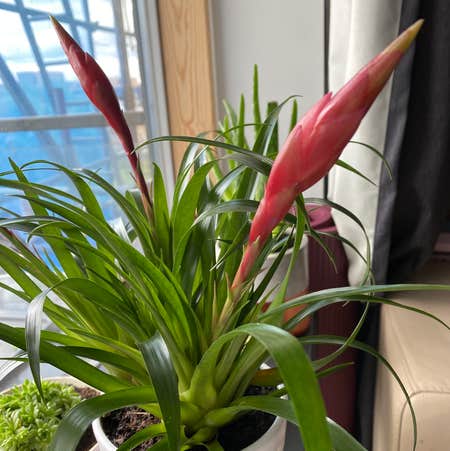



































Bromeliad

4.8 out of 5 (8 experiences)
 Survivor
Survivor
Taxonomy

Neoregelia 'Shenba'
Neoregelia
Bromeliaceae
Poales

How to care for Bromeliad
How often to water your Bromeliad

every 12
Bromeliad needs 0.5 cups of water every 12 when it doesn’t get direct sunlight and is potted in a 5" pot.
Use our water calculator to personalize watering recommendations to your environment or download Greg for more advanced recommendations for all of your plants.

Water 0.5 cups every
12
Finding light for Bromeliad in your home

a window
Bromeliad may have difficulty thriving, and will drop leaves 🍃, without ample sunlight.
Place it less than 3 feet from a south-facing window to maximize the potential for growth.
Select your region to see how the current weather in your area affects the placement of Bromeliad in your home 🏡.
How to fertilize Bromeliad
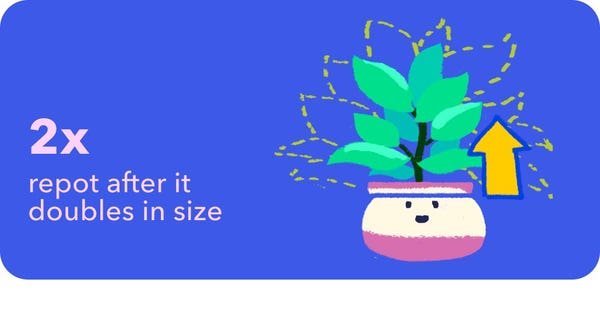
Most potting soils come with ample nutrients which plants use to produce new growth.
By the time your plant has depleted the nutrients in its soil it’s likely grown enough to need a larger pot anyway.
To replenish this plant's nutrients, repot your Bromeliad after it doubles in size or once a year—whichever comes first.
-
What kind of plant is this? I got this as a pair with a very beaten up Philodendron Brasil I want to try to rehab, but I dont really want to let this guy die either. Not sure what it is though?
-
Her soil is dry but her watering schedule is every 12 days .... Isn't the soil suppose to be damp but not soggy? #Neoregelia
-
Have anyone here substitute orchard bark with reptile bedding bark? #Neoregelia
-
Is Bernadette with child??
-
I finally removed Bernadette's babies. We have Brenda, Bianca and Bernice #propagationstation #happyplants #plantsmakepeoplehappy
-
HELP! What’s wrong with her? I was gone for a week And when I came back this is what she looked like #Neoregelia
-
Bromeliad/Neoregelia Help There is an absolutely gorgeous Neoregelia at Planterina I want. But I had very bad luck with a Bromeliad I had, and I don't think I knew how to care for her properly. Can anyone give me direction on how to care for/water these before I give into my impulses and order?? 🥴😀 #neoregelia #bromeliad #plantaddict #Bunny413 #plantsmakepeoplehappy
-
Got some new beauties! #Neoregelia So I got some pretty neat new plants...my problem is Greg can't identify them...and I don't want to have them ID'ed as the closest plant that kinda looks like they do... help!
-
Bromeliad pups?? Can someone point out to me what bromeliad bloom pups look like? I'm a new bomeliad parent, not sure what to look for to see if my plant is on track to bloom again. Thanks! #bromeliad
-
Time to cut? Is it finally time to hack off my bromeliad's bloom? 🥺 or am I way past the time lol. I've been avoiding it because I'm a noob with broms and I was also sad about losing the bloom 😅 any advice and/or tips appreciated! #bromeliad
Care Summary for Bromeliad

Bromeliad
 Greg recommends:
Greg recommends:
 Water
Water
0.5 cups every 12 days
 Placement
Placement
< 3ft from a window
 Nutrients
Nutrients
Repot after 2x growth
Based on the 4” pot your plant is in, and that it doesn’t get direct sunlight.

What other plant parents say
 Survivor 5
Survivor 5
 Fast grower 3
Fast grower 3
 Large, lush leaves 2
Large, lush leaves 2
 Blooms easily 2
Blooms easily 2

 Trending in your area
Trending in your area
 Similar to Bromeliad
Similar to Bromeliad
✨ Discover rare plants

Hoya bordenii

Pink Ruby Sedevaria

Sedeveria 'Blue Elf'

Stomatium acutifolium

Vatricania guentheri

Burro's Tail

Aglaonema Spitfire

Stanhopea tigrina

Scindapsus pictus 'Si…

Red Mistletoe Cactus

Hoya 'Memoria'

Electric Fern

Treasure Flower

Sarcochilus fitzgeral…

Joan Daniel Echeveria

Philodendron 'Glorius'

Strawberry Shake Phil…

